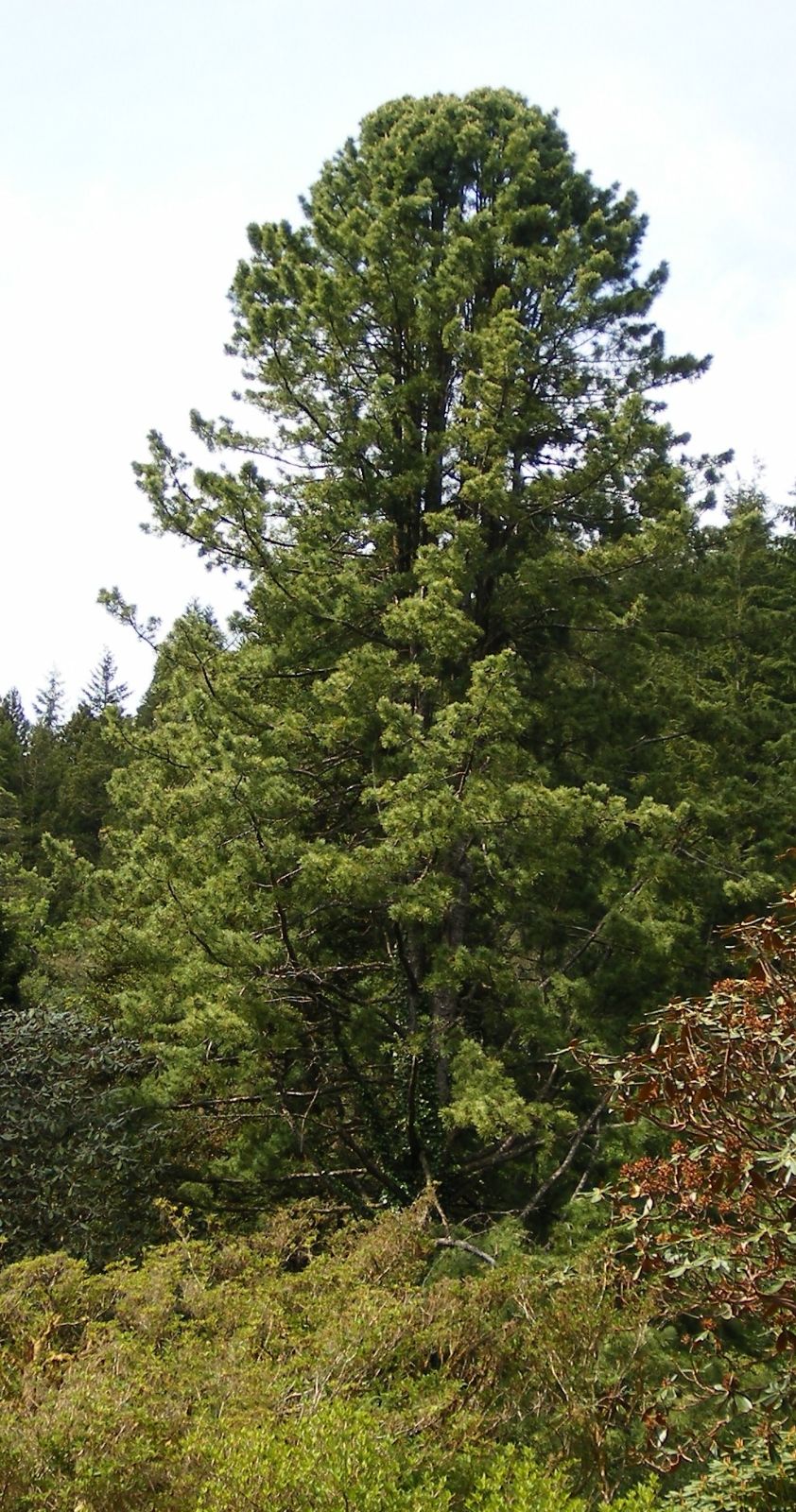Pinus koraiensis
Credits
Article from Bean's Trees and Shrubs Hardy in the British Isles
Recommended citation
'Pinus koraiensis' from the website Trees and Shrubs Online (treesandshrubsonline.
Infraspecifics
Other taxa in genus
- Pinus albicaulis
- Pinus arizonica
- Pinus armandii
- Pinus attenuata
- Pinus ayacahuite
- Pinus balfouriana
- Pinus banksiana
- Pinus bhutanica
- Pinus brutia
- Pinus bungeana
- Pinus canariensis
- Pinus cembra
- Pinus cembroides
- Pinus chiapensis
- Pinus contorta
- Pinus coulteri
- Pinus culminicola
- Pinus densata
- Pinus densiflora
- Pinus devoniana
- Pinus durangensis
- Pinus echinata
- Pinus edulis
- Pinus elliottii
- Pinus engelmannii
- Pinus eremitana
- Pinus flexilis
- Pinus gerardiana
- Pinus greggii
- Pinus × hakkodensis
- Pinus halepensis
- Pinus hartwegii
- Pinus heldreichii
- Pinus henryi
- Pinus × holfordiana
- Pinus hwangshanensis
- Pinus jeffreyi
- Pinus johannis
- Pinus lambertiana
- Pinus leiophylla
- Pinus longaeva
- Pinus massoniana
- Pinus maximartinezii
- Pinus monophylla
- Pinus montezumae
- Pinus monticola
- Pinus morrisonicola
- Pinus mugo
- Pinus muricata
- Pinus nelsonii
- Pinus nigra
- Pinus oocarpa
- Pinus orizabensis
- Pinus palustris
- Pinus parviflora
- Pinus patula
- Pinus peuce
- Pinus pinaster
- Pinus pinceana
- Pinus pinea
- Pinus ponderosa
- Pinus pseudostrobus
- Pinus pumila
- Pinus pungens
- Pinus quadrifolia
- Pinus radiata
- Pinus remota
- Pinus resinosa
- Pinus rigida
- Pinus roxburghii
- Pinus sabiniana
- Pinus serotina
- Pinus sibirica
- Pinus strobiformis
- Pinus strobus
- Pinus sylvestris
- Pinus tabuliformis
- Pinus taeda
- Pinus taiwanensis
- Pinus teocote
- Pinus thunbergii
- Pinus torreyana
- Pinus virginiana
- Pinus wallichiana
- Pinus wangii
- Pinus yunnanensis
A tree reaching at its best 100 to 150 ft in height; young shoots thickly clothed with short, reddish-brown wool; winter-buds 1⁄2 in. long, cylindrical, with a tapered point, resinous. Leaves in fives, persisting to the third year; 31⁄2 to 41⁄2 in. long, dark glossy green, with white stomatal lines on two faces; margins toothed the whole length, the apex bluntish; leaf-sheaths about 1⁄2 in. long, soon falling. Cones about 5 in. long, 21⁄2 to 3 in. wide at the base, tapering thence towards the apex. Scales 11⁄4 in. wide, thick and woody. Seeds 5⁄8 in. long, not winged, edible.
Native of Korea, Japan, Manchuria, and the Russian Far East; introduced by J. G. Veitch in 1861. It is, perhaps, most closely allied to P. cembra, but the growth is more open, the leaves are much more spreading, blunter, and toothed quite to the apex. The cones, too, are twice as long. P. koraiensis is not a first-class pine in this country, growing slowly. A tree at Westonbirt, Glos., pl. 1880, measures 56 × 23⁄4 ft (1967). At Dawyck, Peeblesshire, there is a tree raised from seeds sent by Wilson from Korea in 1919. This measures 60 × 41⁄4 ft (1970).
From the Supplement (Vol. V)
specimens: Westonbirt, Glos., pl. 1880, 51 × 3 ft, dying (1977); Campden House, Glos., 62 × 4 ft (1983); Sidbury Manor, Devon, 60 × 41⁄2 ft (1977); Crarae, Argyll, 52 × 41⁄2 ft (1976); Dawyck, Peebl., the tree mentioned is not this species but P. armandii.
† cv. ‘Silveray’. – A small tree with silvery grey foliage, formerly known in some Dutch nurseries as ‘Glauca’. It received a Gold Medal when exhibited at Boskoop in 1978. There is a fine specimen in the Trompenburg Arboretum, Rotterdam.

